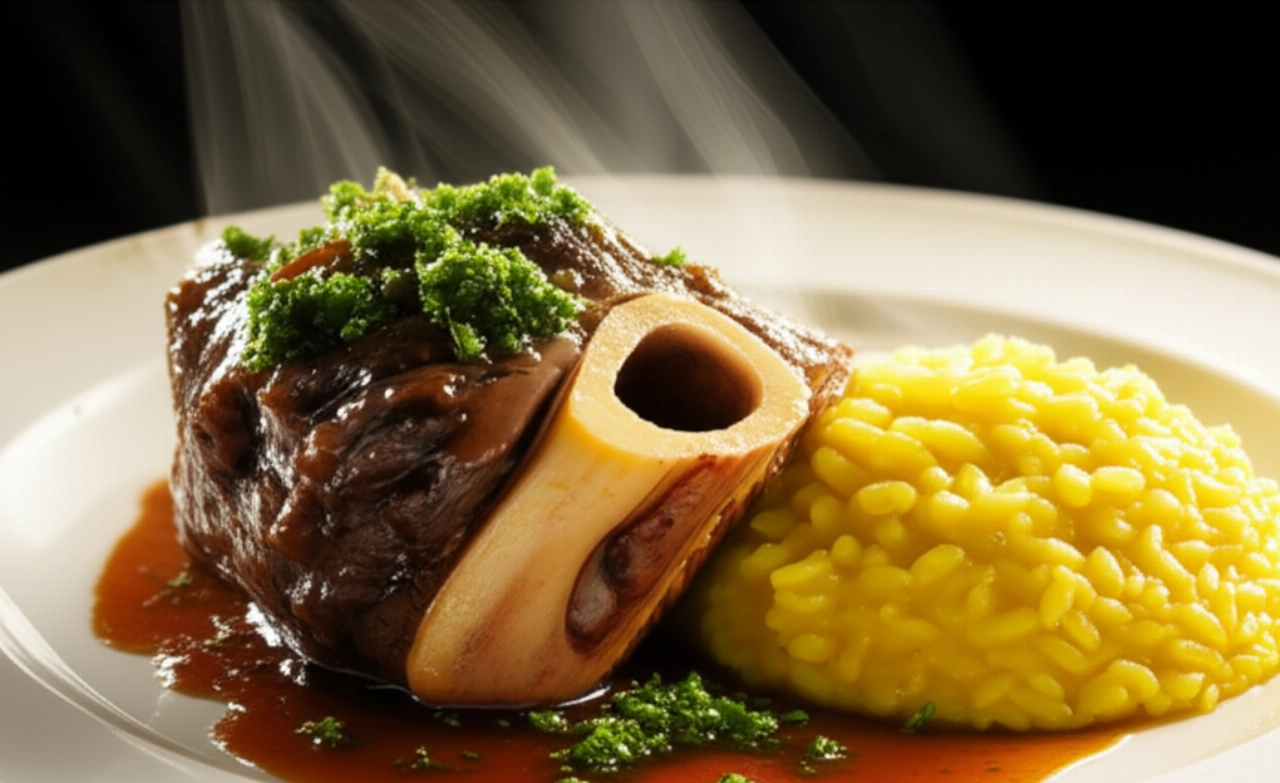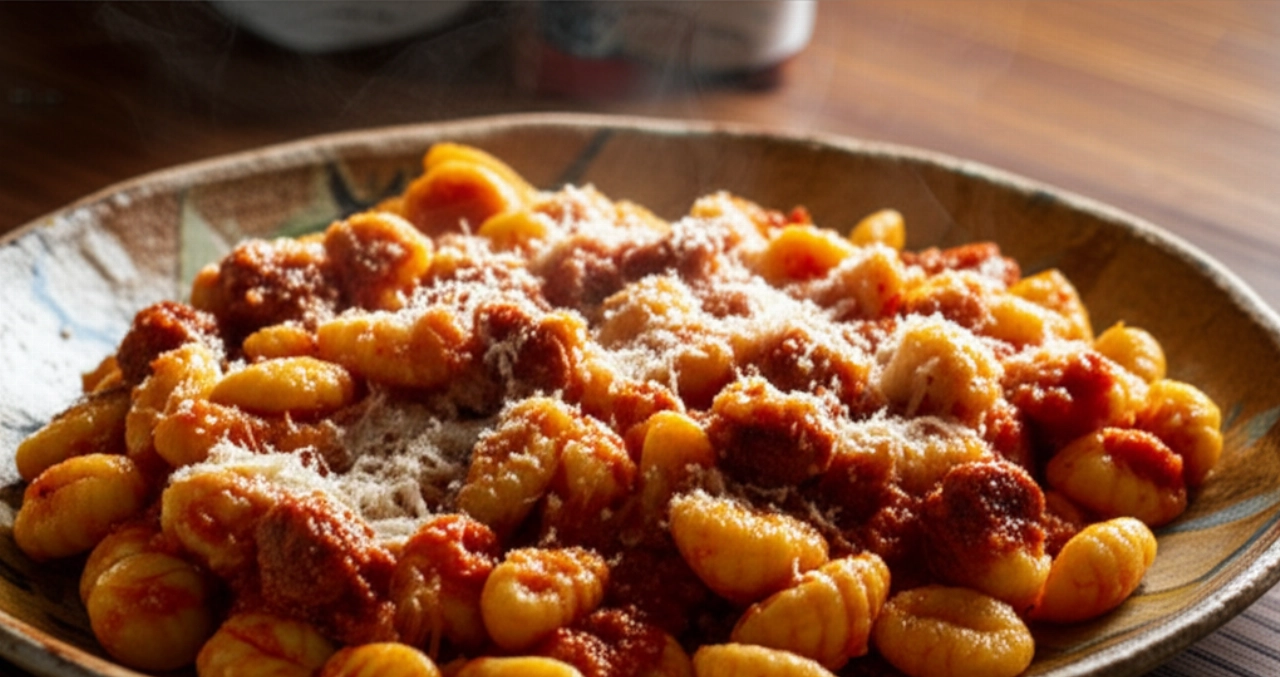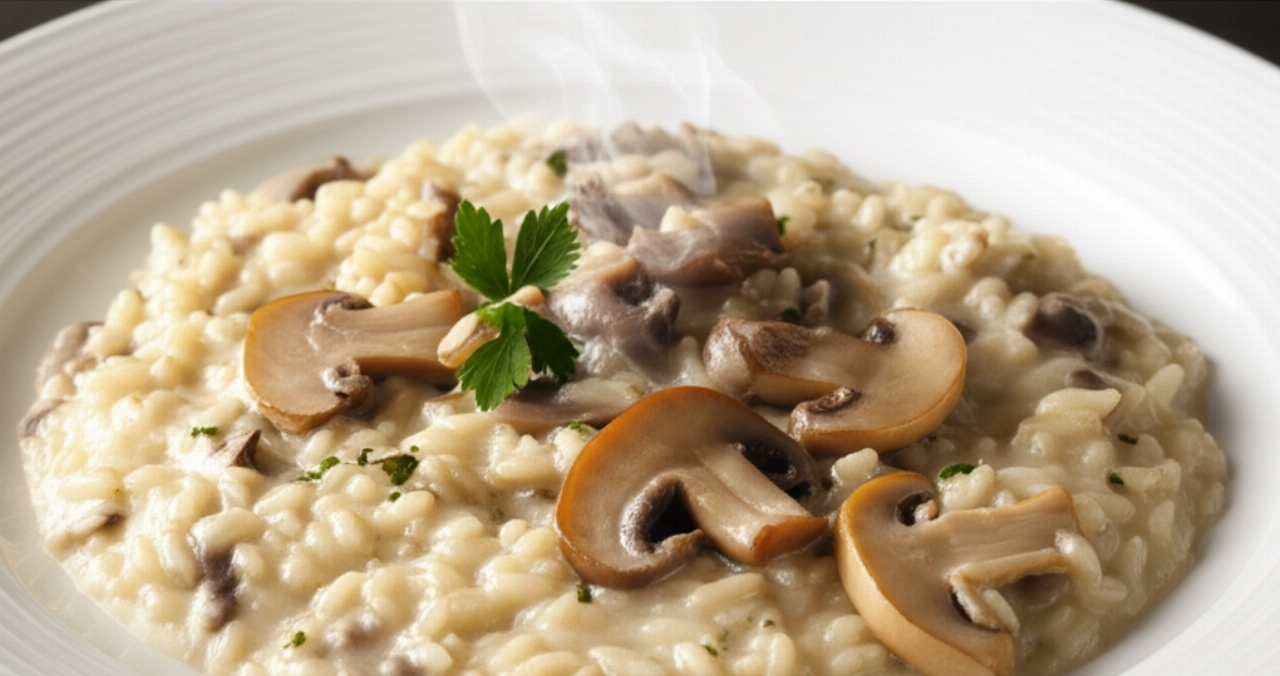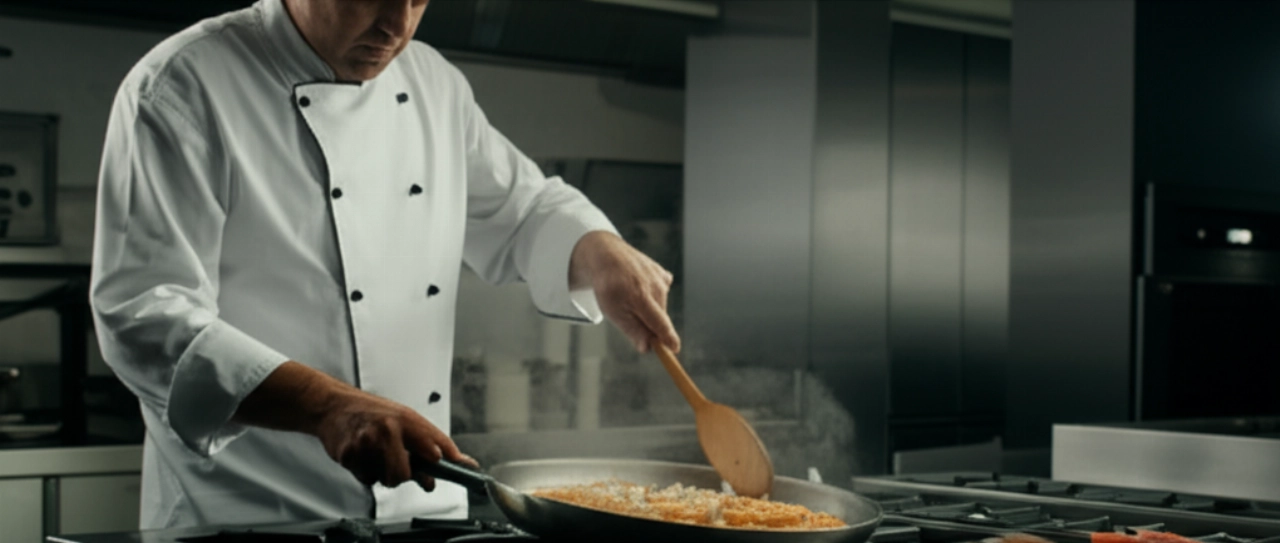Dreaming of bringing to the table a Milanese Risotto so creamy and fragrant it makes you dream, with that intense golden color that only real saffron can give? A dish that, at the first taste, transports you directly to the most authentic trattorias in Milan, perhaps accompanied by a succulent ossobuco?
But perhaps you're afraid it will turn out overcooked, sticky, or lack that authentic flavor you're looking for. Finding 'the real' recipe, with all the trade secrets, can seem like a daunting task, a labyrinth of conflicting advice that leaves you fearing wasting precious time and ingredients.
Don't worry, you're in the right place. Here you won't just find a list of ingredients, but the definitive, step-by-step guide, full of secrets and tips to prepare the best and most foolproof Milanese Risotto of your life. Success is guaranteed, and you'll feel like a true Milanese chef, capable of making everyone exclaim 'Wow!' with every bite.
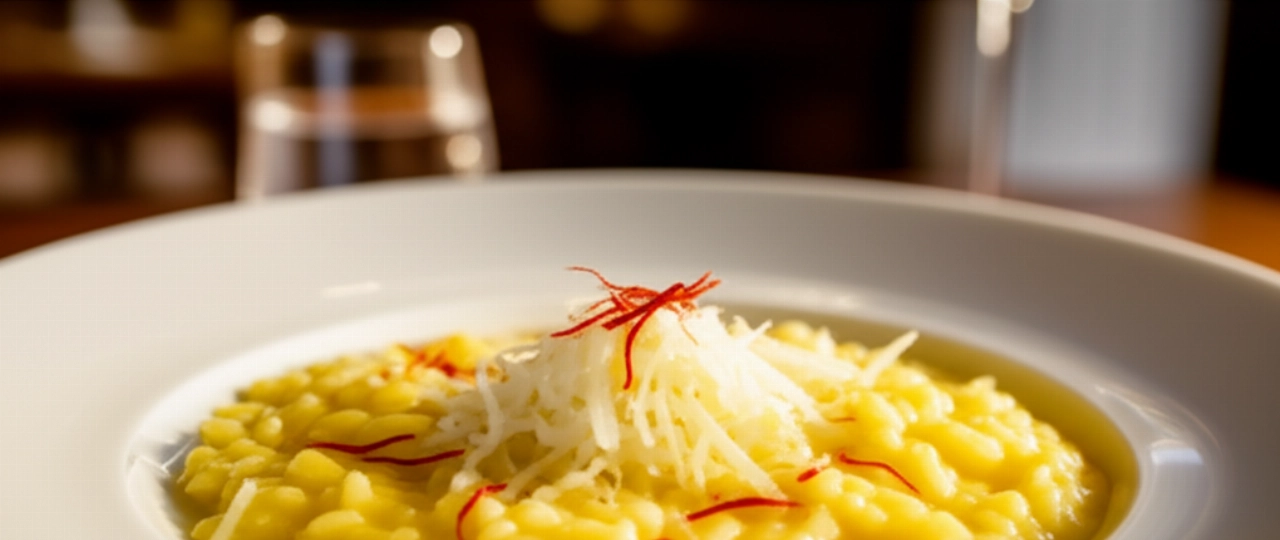
The Secret to Perfect Mantecatura: The Heart of True Milanese Risotto
No more overcooked or sticky risottos! True Milanese Risotto is a work of art in creaminess and flavor, and its greatest secret lies in perfect mantecatura. This is the magical moment when the rice, after absorbing all the broth, transforms into a velvety, enveloping wave, with an intense golden color and the intoxicating aroma of saffron and butter.
I'll guide you step by step to achieve this ideal consistency, what Milanese people call the "wave," where every grain is al dente but immersed in an irresistible cream. It's a step that makes the difference between a good risotto and an unforgettable risotto, and I assure you that, with my tips, it will become your signature in the kitchen.
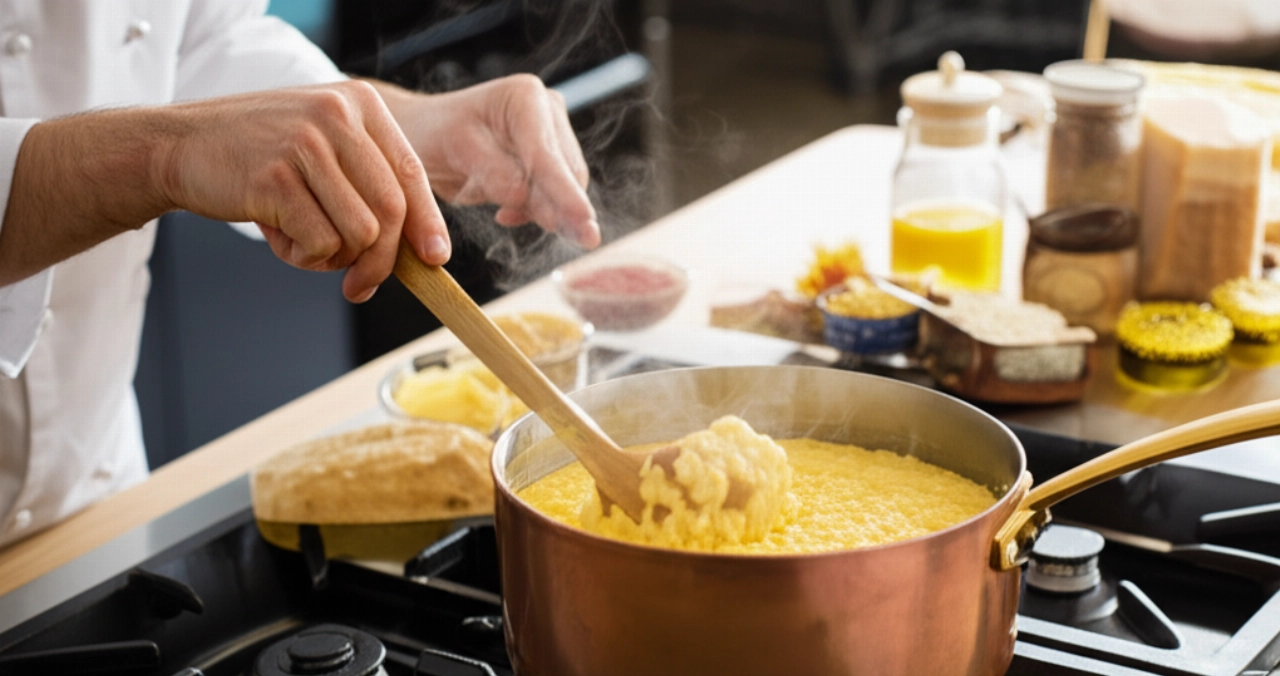
Ingredients for an Authentic Milanese Risotto: The Choice That Makes the Difference
For an impeccable result, the quality of the ingredients is fundamental. It's not just a simple list, but a reasoned selection, the 'why' behind each choice.
- Carnaroli Rice (or Arborio): Not just any rice! Carnaroli is the king of risottos, thanks to its high starch content and its ability to hold its shape without overcooking. It guarantees the creaminess and al dente texture we're looking for.
- Hot Meat Broth: Forget bouillon cubes! Broth is the soul of risotto. Prepare it at home with mixed meats (beef, chicken), vegetables (carrot, celery, onion), and a pinch of salt. It must always be boiling when you add it, so as not to interrupt the rice's cooking.
- Saffron Pistils (or Quality Powder): Saffron is the gold of Milan. Pistils are ideal for a more intense color and aroma. If using powder, make sure it's of excellent quality. It's what gives that unmistakable golden yellow color and unique aroma.
- Beef Bone Marrow (optional but recommended): This is the touch of authenticity that few use, but which makes all the difference. A small piece of marrow, melted in the soffritto, adds unparalleled richness and depth of flavor. If you can't find it, don't despair, the risotto will still be excellent.
- Small White Onion: Finely chopped, it's the aromatic base of the soffritto. It should be sweet and not overpowering.
- Dry White Wine: A good white wine, not too aromatic, is used to deglaze the rice. Its acidity cuts through richness and adds complexity to the flavor.
- Cold, High-Quality Butter: Essential for the final mantecatura. It must be cold to create the thermal shock that binds the starch and gives creaminess.
- Parmigiano Reggiano DOP (or Grana Padano): Freshly grated, it's the other pillar of mantecatura. It adds savoriness and that umami note that completes the dish.
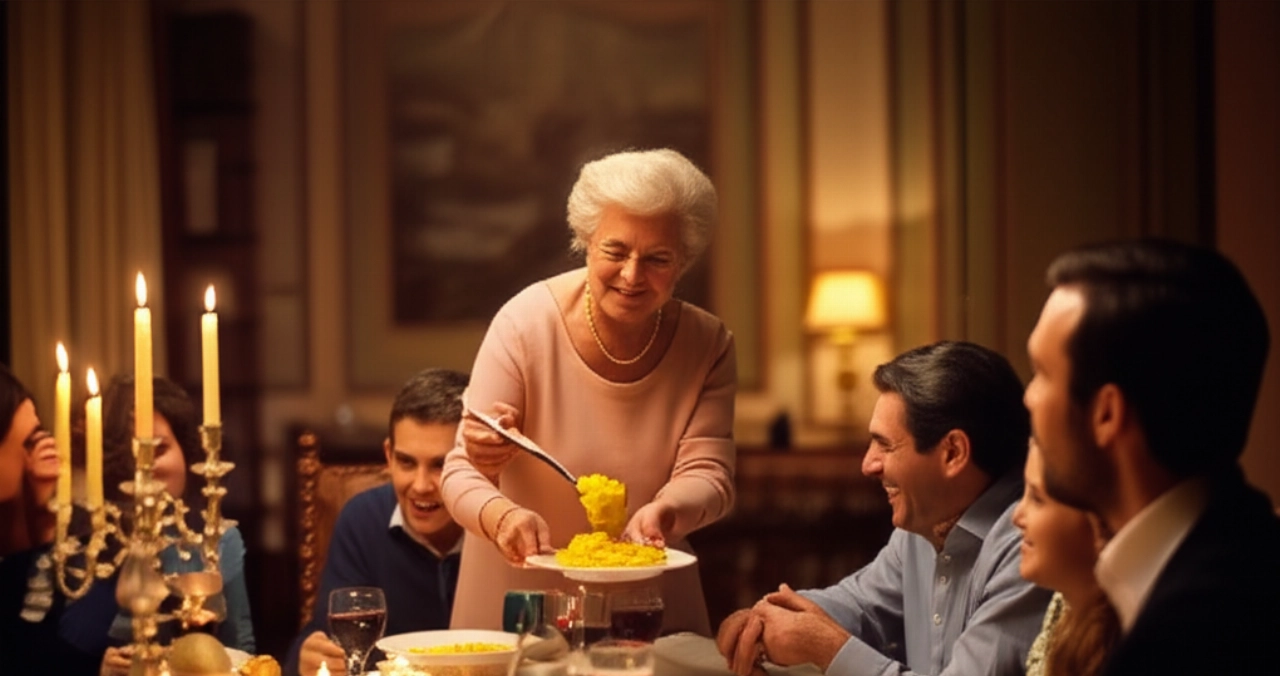
3 Common Mistakes in Milanese Risotto (and How to Avoid Them)
Don't worry, I'm here to reveal the most common pitfalls and how to avoid them, so your risotto will always be a success.
- Not Toasting the Rice Correctly: Many skip this step or do it poorly. Toasting is fundamental! It seals the grain, preventing it from overcooking and allowing it to absorb the broth gradually, releasing starch only at the right moment for creaminess. Toast the rice dry or with a drizzle of oil/butter until it becomes translucent and hot to the touch.
- Adding Too Much Broth at Once: Broth should be added little by little, one ladle at a time, waiting for the previous one to be almost completely absorbed. This allows the rice to cook uniformly and release starch gradually, creating the right creaminess without turning it into a soup.
- Not Mantecating Correctly (or with Hot Ingredients): Mantecatura is the final and most important act. Butter and Parmesan must be added off the heat, and the butter must be cold. This thermal shock is what creates the perfect emulsion, making the risotto creamy and shiny. Don't rush and stir vigorously!
Let's Prepare Milanese Risotto Together: The Foolproof Step-by-Step Guide
Make yourself comfortable, I'll guide you. Every step is explained to guarantee your success.
- Prepare the Broth: Make sure you have your homemade meat broth, hot and ready to use. Keep it on low heat in a small pot next to the risotto pot. It's the foundation of everything!
- The Magical Soffritto: In a thick-bottomed pot (a low, wide casserole is ideal), melt a knob of butter with the beef bone marrow (if using). Add the finely chopped white onion and let it soften over very low heat, without letting it brown. It should become transparent and almost melt.
- Toasting the Rice: Add the Carnaroli rice to the pot and toast it for 2-3 minutes over medium-high heat, stirring continuously with a wooden spoon. You'll hear the grains sizzle and they'll become translucent. This step is crucial for the rice's texture.
- Deglaze with Wine: When the rice is well toasted, deglaze with dry white wine. Increase the heat and let the alcohol evaporate completely, stirring. You'll smell a delicious aroma!
- Cooking with Broth: Start adding the boiling broth, one ladle at a time. Stir gently and wait for the broth to be almost completely absorbed before adding more. Continue this for about 15-18 minutes, or until the rice is al dente. Remember: the risotto should always be soft and slightly liquid.
- The Saffron: Halfway through cooking (after about 8-10 minutes), dissolve the saffron pistils in a small ladle of hot broth and add them to the risotto. Stir well to evenly distribute the golden color and aroma.
- The Final Mantecatura: When the rice is al dente (taste it!), turn off the heat. Add the cold butter cut into cubes and the grated Parmigiano Reggiano. Stir vigorously, "mantecating" the risotto with decisive movements to incorporate air and create the famous "wave." Cover with a lid and let rest for 2 minutes.
- Serving: Uncover the risotto, stir one last time, and serve immediately. It should be creamy, shiny, and slide onto the plate.
The Extra Touch: My Grandmother's Advice
My grandmother, the true guardian of Milanese cooking secrets, always told me that the secret to a perfect risotto isn't just in the ingredients, but in the patience and love you put into it. And a little trick she revealed to me for an even rounder flavor? Add a tiny tip of a teaspoon of meat extract (the one in a tube, of excellent quality) along with the broth, towards the end of cooking. It doesn't alter the flavor, but enhances it, making the risotto even more enveloping. A secret few know!
Tips and Frequently Asked Questions about Milanese Risotto
Here are some of the questions I'm asked most often, with my "grandma chef" answers:
Can I omit the beef bone marrow?
Certainly, you can omit it! The risotto will still be delicious. The marrow adds a note of richness and authenticity, but it's not essential for the dish's success. If you omit it, use a little more butter for the initial soffritto.
How do I know when the rice is al dente?
The best way is to taste! The grain should be tender on the outside but still slightly resistant in the center, with a small crunchy "heart." It should be neither hard nor mushy. Remember that it will continue to cook slightly even after turning off the heat.
Can I prepare Milanese Risotto in advance?
For risotto to be perfect, it should be eaten immediately after preparation. Its creaminess and "wave" consistency are quickly lost. If you absolutely must, you can prepare the soffritto and toast the rice in advance, then finish cooking with the broth only at the last moment. But my advice is: enjoy it as soon as it's ready!
How can I store leftover risotto?
If you have leftover risotto, you can store it in the refrigerator in an airtight container for up to one day. To reheat it, add a splash of broth or water and warm it over low heat, stirring, but know that the consistency will never be like freshly made risotto. A great idea is to transform it into arancini or "risotto al salto" patties!
A Masterpiece of Flavor and Tradition
There you have it! Now you hold not just a recipe, but all the secrets to bring to the table a Milanese Risotto that will make everyone's eyes light up and delight their palate. A dish that tastes of tradition, care, and true love for cooking, a warm embrace that only Italian cuisine can give.
Don't be afraid, follow my tips step by step and you'll see that success is guaranteed. Every grain will be a small masterpiece of flavor and creaminess, and you'll be the hero of the kitchen!
Have you prepared your Milanese Risotto following our guide? We're very curious to know how it went! Leave a comment below, tell us about your experience, or share a photo of your masterpiece on Instagram by tagging @CercaRicette.it. And if you want to complete your meal with a Milanese classic, don't miss our recipe for Milanese Ossobuco, the perfect pairing!
